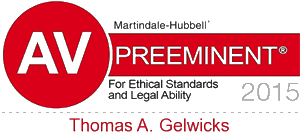In Ohio, the law states that property owners can be fully responsible for injuries caused by dangerous conditions. The defect does not even have to have been caused by the property owner, for them to be liable. All that is necessary is that the owner actually knew the condition existed on their property – or merely that they should have known.
Falls, although common, can cause devastating injuries. In fact, the National Safety Council states that fall-down injuries are the number two cause of accidental death and disability, following car accidents. Two-thirds of falls are due to dangerous conditions. And they are the single most common reason for emergency room visits.
The Heavy Toll on Fall-Down Victims
While most falls do not result in death the fact is that, each year in the United States, 17,000 people die from falling injuries. The most frequent injuries we find involve the back, shoulder, knee and arm (including the wrist and elbow). While joint injuries are most common, those involving closed head injuries are too often catastrophic. National statistics bear out that the average cost for medical fees, involving a fall injury, amount to $28,000. It is not uncommon for serious falls to result in total medicals well exceeding six figures.
We have represented hundreds of individuals who have been seriously hurt, in various ways, on the premises of others in Cincinnati and southwestern Ohio. We have successfully represented people hurt by falling merchandise, undetected holes or rough patches, swimming pool defects, negligent mopping cases, and many other ways.
Sometimes the hazardous environment is caused by poor design or improper maintenance. Defects in flooring or uneven surfaces are examples of an owner failing to use reasonable care.
Falls from snow, ice and rain
Sometimes the victim of a fall on snow, ice or rainwater has a valid claim to pursue. These are the exception, however. Although many people believe that homeowners and store managers have an obligation to clear natural accumulations, Ohio law generally states otherwise.
To advance a claim involving a fall on a natural substance (snow, ice, mud and rain) is difficult. Usually it requires a showing that the pedestrian could not have had awareness of the floor or walkway defect. However, those situations involving an unnatural accumulation of moisture or ice can be strong cases. This is because the premises defect is really caused by the defendant’s negligence.
Each situation must be evaluated carefully
Having been practicing only Ohio injury law for over 30 years, we understand the evidentiary requirements needed to bring a successful claim to settlement or litigation. To survive the inevitable pre-trial motions of the insurance company, the proper evidence must be gathered and organized. Argument of Ohio case law must be strategized. Premises insurance lawyers never proceed to trial or arbitration without first trying to delay with burdensome motion practice.
The best lawyering is done by carefully evaluating all factors before initiating a claim. The preliminary investigation will involve studying the place of injury either through photographic evidence, or even first hand. All police and medical reports must be obtained. Witnesses must be interviewed. Only then can the odds of prevailing be determined, as to whether a valid Ohio claim exists – and its range of value.
Our office handles premises liability claims including such situations as:
- Falls at restaurants or grocery stores as a result of unattended to spills
- Failure to place warning signs while floor cleaning or when debris is known
- Negligent security in commercial areas, especially in known high-crime areas
- Failure of the premises owner to provide adequate lighting
- Defective carpeting or stairs at apartment buildings or homes
- Hidden dangers the pedestrian could not have known about
- Sub-contractor injuries resulting from negligence on construction sites
- Falling products at stores, especially “big box” retailers
- Snow, ice or rain slips that existed as a result of unnatural accumulation
The Aftermath of the Fall
It is essential that the cause of the fall be identified. If the dangerous condition cannot be determined immediately, it rarely is discernable at a later time. Preserving evidence is key, and often this means taking photos.
If the fall is not reported soon to the premises owner, it will be difficult to prosecute a money damages claim. This is especially true of commercial establishments, which may deny that anyone fell at all. The names and contact numbers of witnesses should be obtained, to have verification of the unsafe premises. This is true whether the defendant is a franchisor, a governmental entity or a parent corporation.
If there have been violations of industry safety standards or governmental codes – these can point to liability. Expert witnesses may be needed to establish regulation breaches or structural engineering defects.
Again, the fall-down victim must show that the property owner should have been aware the hazard existed. The second critical test is that they failed any reasonable effort to remedy it. Establishing that the property owner had time to discover and also repair the problem may provide for an excellent claim outcome.

